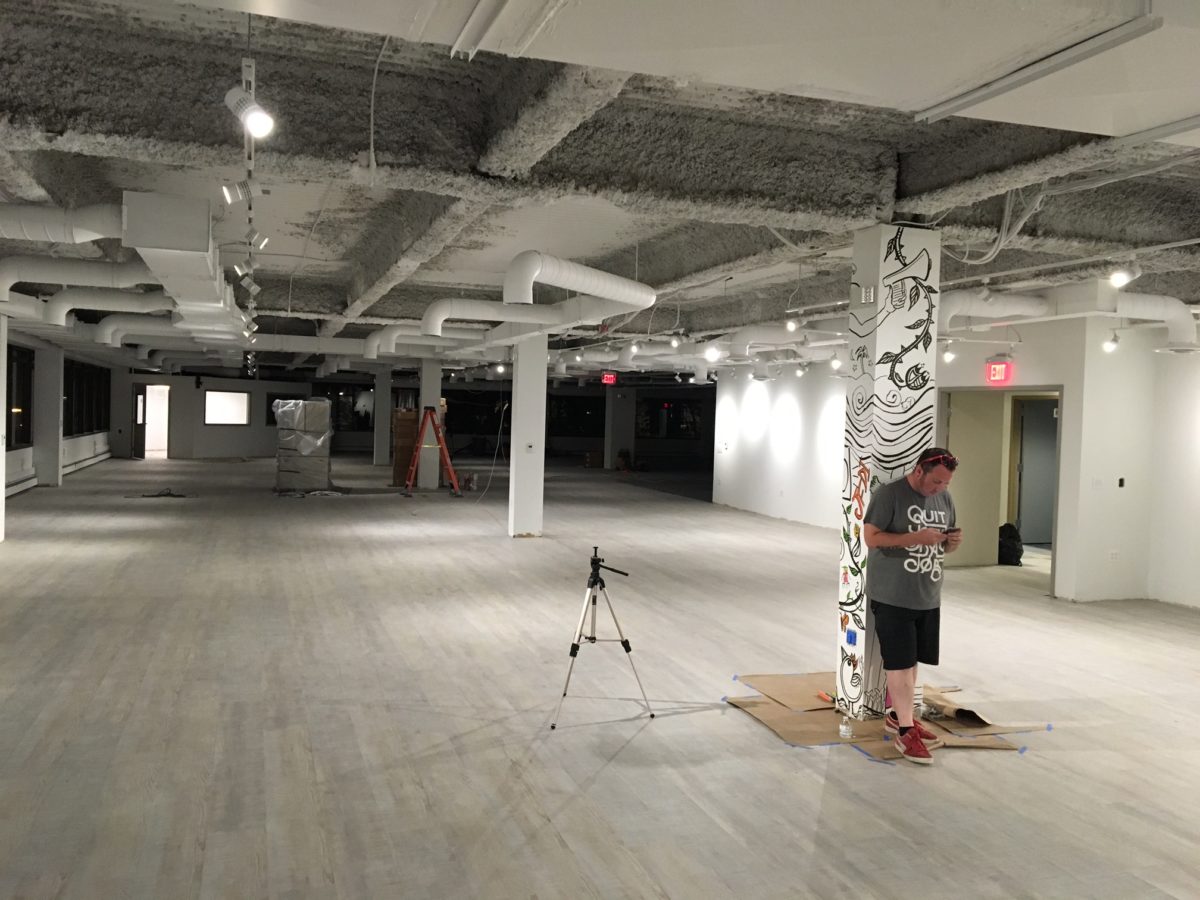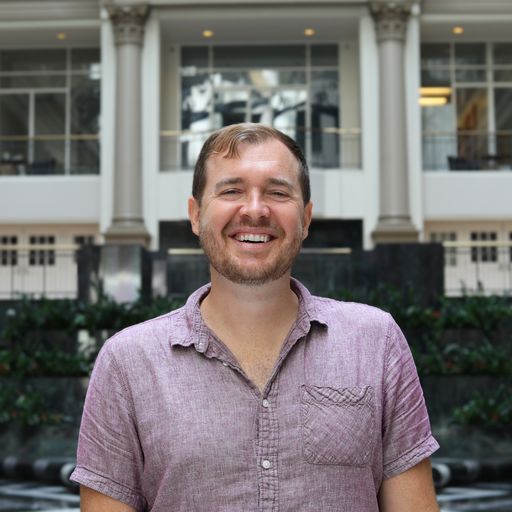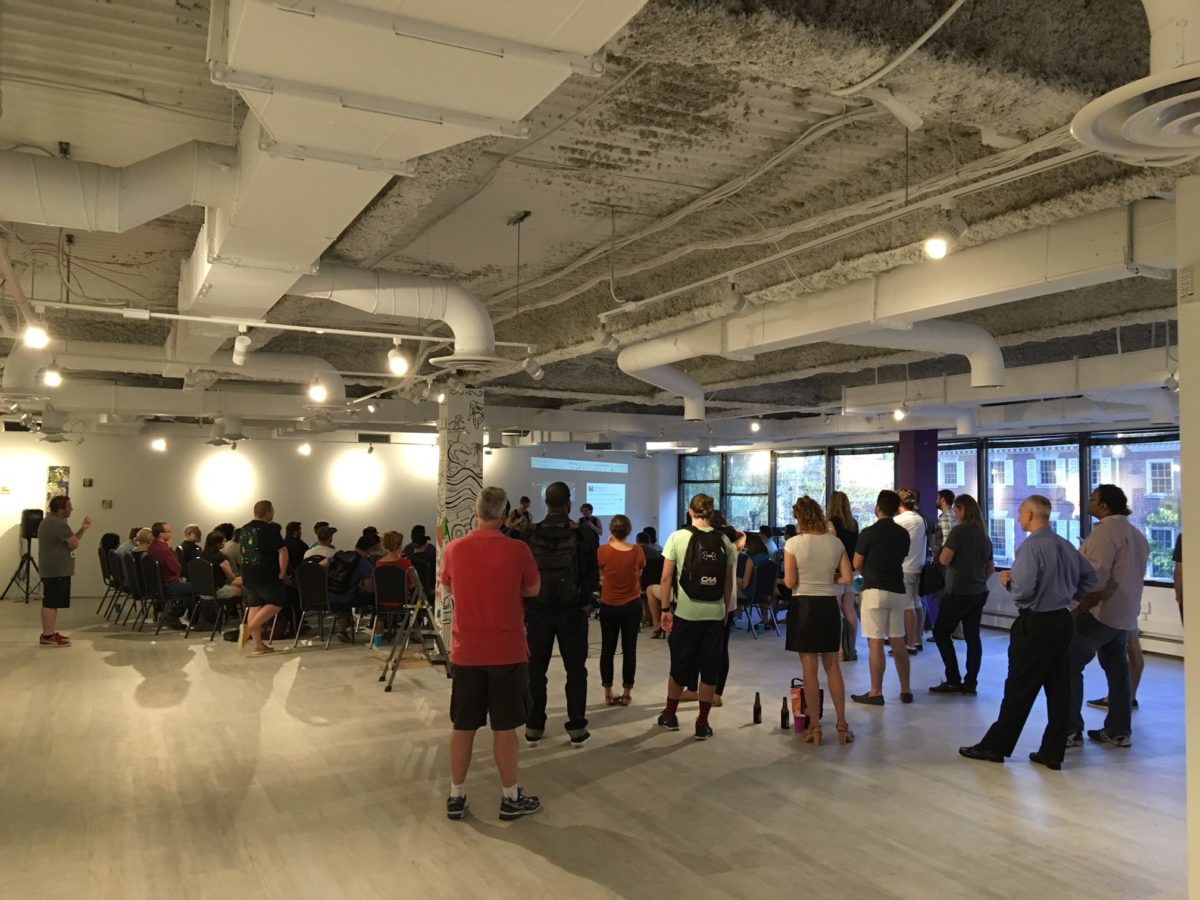You could say the success of coworking depends first on the success of its people. But at some point, the physical space has to play a role, too.
More than a year after the founder of Philadelphia coworking flag bearer Independents Hall first announced that the future of its location was in question, its members got a public look last week at what will become Indy Hall’s new home later this month. It’s a journey that taught cofounder Alex Hillman the importance of both: the people he cherishes most and the place he’s always prioritized less.
“We’ve been walking on an injury for a long time. And we’ve gotten good at it. You wouldn’t even know it. This heals that injury,” Hillman said of the limitations of the current location compared with the company’s new space. “This is what it looks like when it doesn’t hurt to look.”
By the end of August, Indy Hall will have made its second move since being launched in 2007: from 2,000 square feet on tiny Strawberry Street off Market to 4,400 square feet on the second floor of 20 N. 3rd St. (which featured expansions to the first-floor storefront and the adjacent 22 N. 3rd St.) to this new location on the third floor of the Colonial Penn building at 399 Market St.
We are among the best in the world at the social. And you know, sometimes we suck at the physical. But the ability to match the caliber of the social with the physical is going to change a lot.
Hillman confirmed in April that Indy Hall would be staying in Old City after looking at more than 100 locations, not all of which were in its home neighborhood.
He won’t put a square footage number on the new space — he’s known for his steadfastness and said those sorts of real estate terms encourage comparisons he doesn’t want.
“Indy Hall is a fundamentally different thing,” Hillman said after a town hall for his members, without actually naming, say, WeWork’s glossy photos of its 30,000 square feet in Northern Liberties (“without any people in them,” another Indy Haller said). Hillman would only say the current space is “the right amount of space,” or similarly sized to its current location but more flexibly laid out (70 percent of his members don’t use a desk, he reported).
The new Indy Hall location is, at present, very clean and open, fitting the Operation Blank Canvas mantra Hillman had been rallying in his regular social media postings about the buildout. The space features half of the building’s third floor, dominated by big windows that look into the trees that line Market and Fourth streets. Unlike previous locations, this Indy Hall has a pair of conference rooms and several phone rooms. Last week’s town hall came before any of the space’s furniture was in place, so there’s much decorating to be done, but to start, the footprint would look familiar to anyone who’s visited other coworking spaces of the moment: open floor plan with lots of natural light, breakout spaces, bare floors and high ceilings. It’s modern and light and welcoming.
There were cheers for expanded bicycle racks in a nearby parking garage and access to outdoor space. Members spoke about how “clean” and “professional” the space was: up an elevator from a well-lit lobby with building security guards. After years of hearing Hillman criticize those whom he felt spoke too often about the physical importance of a coworking space, this felt decidedly geared toward place.
Though no doubt unique, with its heavy art and high ceilings, the current Indy Hall space could be called cluttered, though certainly warm. For now, this is something different altogether.

Alex Hillman having a quiet moment after the first Indy Hall town hall at 399 Market St. (Photo by Christopher Wink)
“With coworking, you have the physical and the social infrastructure,” Hillman said, sitting on the ground with this reporter after the 75 members who attended the town hall had left. “We are among the best in the world at the social. And you know, sometimes we suck at the physical. But the ability to match the caliber of the social with the physical is going to change a lot.”
And the Indy Hall faithful, at least many of the 75 who attended last week’s town hall, were in full agreement.
“Maybe we got too comfortable [at the present location]. Homeyness can lead to sloppiness,” said Parker Whitney, the barrel-chested, beer-swilling entrepreneur behind video game studio Flyclops. “I walked in here, saw the familiar faces and immediately felt at home.”
“It helped that we were a part of the process,” said Reed Gustow, the slight, gray-haired leader of the local WordPress meetup and a longtime blood-drive organizer. As the longtime Indy Hall member said of Hillman and his team: “They aren’t just communicating with the tenants.”
Polite and mild-mannered, Gustow said the word “tenants” with a bit of a sneer, as that word conveys a degree of distance that the Indy Hall family (and several of them do use the word “family,” like when mourning a member passing recently) rejects. In addition to several hundred paying members, Hillman also employs Adam Teterus, who doubles as a burlesque performer, Sam Abrams and visual artist Sean Martorana. (Full disclosure: Martorana just installed a mural on this reporter’s house.)
“This loses some of the clubhouse feel and let’s us be a bit more professional,” said Johnny Bilotta, the head of design at Arcweb, an Indy Hall spinout. Bilotta is among those Indy Hall members who date back to the community’s Strawberry Street days.
“And we have permission to participate in what this space will become,” said thoughtful illustrator Mike Jackson, whom, full disclosure, Technical.ly retained to produce our Tomorrow Tour infographics. And that will come with its challenges, as all open forums do.
A pair of younger members were excited about the opportunity to “draw on the walls” of the new clean, white-washed Indy Hall space. Privately, several Indy Hallers said they “cringed” at the idea of being too “accommodating to everyone’s creativity,” as one prominent member put it.
“We just need to be more thoughtful,” said Martorana. It’s something Hillman said they’ll be able to navigate if they stay true to their people-first logic.
"Welcome to the new home of @indyhall" says @adamteterus ahead of their pre-move town hall at 399 Market Street pic.twitter.com/Nr0i1cfVw8
— Technical.ly (@Technical_ly) August 4, 2016
“We’re moving into a new space but nothing about us changes,” said Teterus, who emceed the town hall with Abrams.
Once a fixture of these semi-regular town halls, Hillman’s cofounder Geoff DiMasi, the proprietor of South Philly design agency P’unk Ave, wasn’t in attendance. Hillman noted DiMasi has been particularly busy with family of late.
But there’s no questioning that place matters to many in the room: they testified to it.
Hillman is no man’s pragmatist. He’ll cringe if you talk about coworking as a business, with tenants and leases and private offices. But he’s faced the forces of the billion-dollar real estate industry’s discovery of coworking as lead generation tool. So where a few short years ago, he was atop the coworking brand keeping realtors and property managers from prying open the word’s use, Hillman is now more conciliatory. He’ll concede that the seismic shift that has taken place over the last decade to put small web and software companies into colocation offices in cities means something for the industry he’s in. (For instance, he referred to what he does as “an industry” for the first time in this reporter’s memory.) So while he’s as protective as ever of the prioritizing of people (Hillman prefers independent workers, rather than small companies that develop their own internal cultures) and certain of the role he plays in defending coworking as a movement of people, he spent the last six weeks looking very much like a property developer, project-managing construction crews and making decisions about lighting.
Hillman is silly with metaphors. Walls and signs and solid ground are all things he’ll say and mean a dozen different ways. But even he sees his progression from “people only” to an admission that the space matters quite a bit too when you’re bringing them together.
“For 14 months I had to say I didn’t know where we’d be. And you all trusted me. … Someone told me, ‘This is the space you have been working toward since the beginning,'” Hillman said to a room of people he said were friends first and paying members second. “This year could have fucked us. Instead this may have been a better outcome than even I expected.”
Before you go...
Please consider supporting Technical.ly to keep our independent journalism strong. Unlike most business-focused media outlets, we don’t have a paywall. Instead, we count on your personal and organizational support.
Join our growing Slack community
Join 5,000 tech professionals and entrepreneurs in our community Slack today!





